22 low relevance results shown for 'Plain'.
Showing low relevance matches only. Return to normal search results
Evolution - The theory of evolution by natural selection explains the diversity of living things and is supported by a range of scientific evidence ACSSU151 Year 8 Chemical Sciences
Matter and Particles - The properties of the different states of matter can be explained in terms of the motion and arrangement of particles ACSSU180 Year 9 Earth and Space Sciences
Plate Tectonics - The theory of plate tectonics explains global patterns of geological activity and continental movement ACSSU182 Year 9 Physical Sciences
Energy Transfer - Energy transfer through different mediums can be explained using wave and particle models ACSSU188 Year 10 Earth and Space Sciences
Universe - The universe contains features including galaxies, stars and solar systems and the Big Bang theory can be used to explain the origin the universe ACSSU190 Year 10 Physical Sciences
Energy Conservation - Energy conservation in a system can be explained by describing energy transfers and transformations ACSCH032 Year 11 Chemical fundamentals
Properties and structure of materials - The characteristic properties of metals (for example, malleability, thermal conductivity, electrical conductivity) are explained by modelling metallic bonding as a regular arrangement of positive ions (cations) made stable by electrostatic forces of attra ACSCH037 Year 11 Chemical fundamentals
Chemical reactions - Endothermic and exothermic reactions can be explained in terms of the Law of Conservation of Energy and the breaking and reforming of bonds; heat energy released or absorbed can be represented in thermochemical equations ACSCH056 Year 11 Molecular interactions and reactions
Intermolecular forces and gases - The shapes of molecules can be explained and predicted using three dimensional representations of electrons as charge clouds and using valence shell electron pair repulsion (VSEPR) theory ACSCH060 Year 11 Molecular interactions and reactions
Intermolecular forces and gases - The behaviour of gases, including the qualitative relationships between pressure, temperature and volume, can be explained using kinetic theory ACSCH065 Year 11 Molecular interactions and reactions
Aqueous solutions and acidity - The solubility of substances in water, including ionic and molecular substances, can be explained by the intermolecular forces between species in the substances and water molecules, and is affected by changes in temperature ACSCH098 Year 12 Equilibrium acids and redox reactions
Chemical equilibrium systems - The strength of acids is explained by the degree of ionisation at equilibrium in aqueous solution, which can be represented with chemical equations and equilibrium constants (Ka) ACSCH099 Year 12 Equilibrium acids and redox reactions
Chemical equilibrium systems - The relationship between acids and bases in equilibrium systems can be explained using the Brønsted Lowry model and represented using chemical equations that illustrate the transfer of hydrogen ions ACSPH076 Year 11 Linear Motion and Waves
Waves - A wave model explains a wide range of lightrelated phenomena including reflection, refraction, total internal reflection, dispersion, diffraction and interference; a transverse wave model is required to explain polarisation ACSPH137 Year 12 Revolutions in modern physics
Quantum theory - A wide range of phenomena, including black body radiation and the photoelectric effect, are explained using the concept of light quanta ACSPH139 Year 12 Revolutions in modern physics
Quantum theory - The Bohr model of the hydrogen atom integrates light quanta and atomic energy states to explain the specific wavelengths in the hydrogen spectrum and in the spectra of other simple atoms; the Bohr model enables line spectra to be correlated with atomic en ACSCH031 Year 11 Chemical fundamentals
Properties and structure of materials - The properties of ionic compounds (for example, high melting point, brittleness, ability to conduct electricity when liquid or in solution) are explained by modelling ionic bonding as ions arranged in a crystalline lattice structure with forces of attract ACSCH027 Year 11 Chemical fundamentals
Properties and structure of atoms - The type of bonding within substances explains their physical properties, including melting and boiling point, conductivity of both electricity and heat, strength and hardness ACSPH071 Year 11 Linear Motion and Waves
Waves - The mechanical wave model can be used to explain phenomena related to reflection and refraction
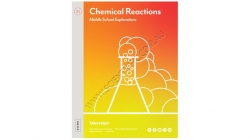
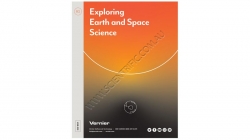
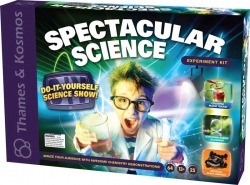
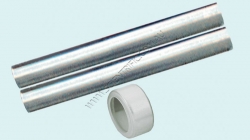
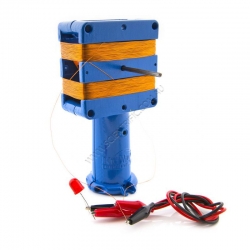
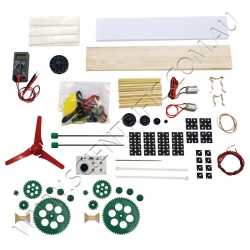

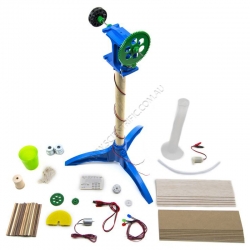
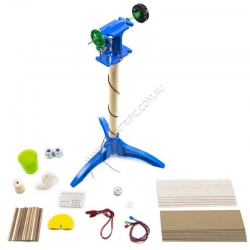

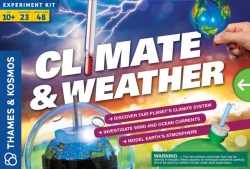
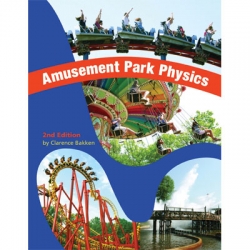
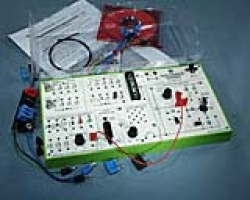
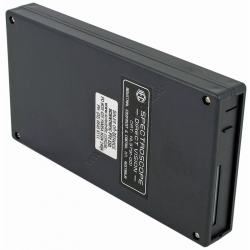
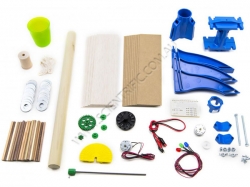

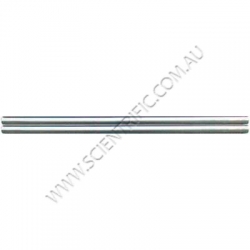
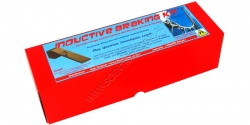
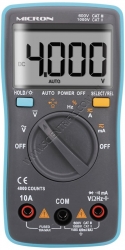
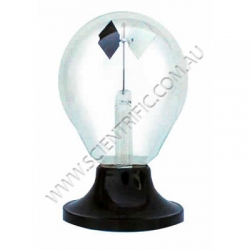
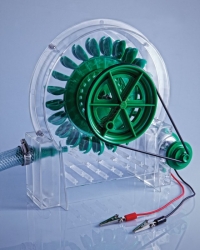
22 low relevance results shown for 'Plain'.
Showing low relevance matches only. Return to normal search results
Curriculum resources related to 'Plain'
ACSSU185 Year 10 Biological SciencesEvolution - The theory of evolution by natural selection explains the diversity of living things and is supported by a range of scientific evidence ACSSU151 Year 8 Chemical Sciences
Matter and Particles - The properties of the different states of matter can be explained in terms of the motion and arrangement of particles ACSSU180 Year 9 Earth and Space Sciences
Plate Tectonics - The theory of plate tectonics explains global patterns of geological activity and continental movement ACSSU182 Year 9 Physical Sciences
Energy Transfer - Energy transfer through different mediums can be explained using wave and particle models ACSSU188 Year 10 Earth and Space Sciences
Universe - The universe contains features including galaxies, stars and solar systems and the Big Bang theory can be used to explain the origin the universe ACSSU190 Year 10 Physical Sciences
Energy Conservation - Energy conservation in a system can be explained by describing energy transfers and transformations ACSCH032 Year 11 Chemical fundamentals
Properties and structure of materials - The characteristic properties of metals (for example, malleability, thermal conductivity, electrical conductivity) are explained by modelling metallic bonding as a regular arrangement of positive ions (cations) made stable by electrostatic forces of attra ACSCH037 Year 11 Chemical fundamentals
Chemical reactions - Endothermic and exothermic reactions can be explained in terms of the Law of Conservation of Energy and the breaking and reforming of bonds; heat energy released or absorbed can be represented in thermochemical equations ACSCH056 Year 11 Molecular interactions and reactions
Intermolecular forces and gases - The shapes of molecules can be explained and predicted using three dimensional representations of electrons as charge clouds and using valence shell electron pair repulsion (VSEPR) theory ACSCH060 Year 11 Molecular interactions and reactions
Intermolecular forces and gases - The behaviour of gases, including the qualitative relationships between pressure, temperature and volume, can be explained using kinetic theory ACSCH065 Year 11 Molecular interactions and reactions
Aqueous solutions and acidity - The solubility of substances in water, including ionic and molecular substances, can be explained by the intermolecular forces between species in the substances and water molecules, and is affected by changes in temperature ACSCH098 Year 12 Equilibrium acids and redox reactions
Chemical equilibrium systems - The strength of acids is explained by the degree of ionisation at equilibrium in aqueous solution, which can be represented with chemical equations and equilibrium constants (Ka) ACSCH099 Year 12 Equilibrium acids and redox reactions
Chemical equilibrium systems - The relationship between acids and bases in equilibrium systems can be explained using the Brønsted Lowry model and represented using chemical equations that illustrate the transfer of hydrogen ions ACSPH076 Year 11 Linear Motion and Waves
Waves - A wave model explains a wide range of lightrelated phenomena including reflection, refraction, total internal reflection, dispersion, diffraction and interference; a transverse wave model is required to explain polarisation ACSPH137 Year 12 Revolutions in modern physics
Quantum theory - A wide range of phenomena, including black body radiation and the photoelectric effect, are explained using the concept of light quanta ACSPH139 Year 12 Revolutions in modern physics
Quantum theory - The Bohr model of the hydrogen atom integrates light quanta and atomic energy states to explain the specific wavelengths in the hydrogen spectrum and in the spectra of other simple atoms; the Bohr model enables line spectra to be correlated with atomic en ACSCH031 Year 11 Chemical fundamentals
Properties and structure of materials - The properties of ionic compounds (for example, high melting point, brittleness, ability to conduct electricity when liquid or in solution) are explained by modelling ionic bonding as ions arranged in a crystalline lattice structure with forces of attract ACSCH027 Year 11 Chemical fundamentals
Properties and structure of atoms - The type of bonding within substances explains their physical properties, including melting and boiling point, conductivity of both electricity and heat, strength and hardness ACSPH071 Year 11 Linear Motion and Waves
Waves - The mechanical wave model can be used to explain phenomena related to reflection and refraction
Products related to 'Plain'

Vernier Exploring Chemical Reactions - E Version
VERNIER EXPLORING CHEMICAL REACTIONS EBOOK
Explore various types of chemical reactions with your Years 4-8 Middle School students as they build a model to explain what goes on at the molecular level during a chemical reaction. Students investigate endothermic and exotherm...
Order code: MSB-CR-E

Vernier Exploring Earth and Space Science - E Version
VERNIER EXPLORING EARTH AND SPACE SCIENCE EBOOK
Explore the Earth science topics of weather, soil and water quality with your Years 4-8 Middle School students. Collect, share and analyze sensor data with Vernier's free Graphical Analysis 4 software. The GA4 app facilitate...
Order code: MSB-ESS-E

Spectacular Science
Do-It-Yourself Science Show.
Amaze your audience with awesome chemistry demonstrations! Rehearse and perform a science show to entertain your friends and family and teach them some science in the process. The experiments in this kit have been carefully selected and scri...
Order code: 642419

Mini Tube Kit and Magnet for Induction and Resonance Experiments
Designed and manufactured by and only available from Scientrific.
The kit consists of a 200mm long PVC tube and a 200mm long aluminium tube. The PVC tube's exterior has been painted so that both tubes appear to be made from aluminium. The aluminium tube is the correct size for...
Order code: SC1015

KidWind Simple Hand Generator Kit
KIDWIND SIMPLE HAND GENERATOR
The KidWind Simple Hand Generator (simpleGEN) is an easy-to-build AC generator that allows students to explore the basics of electrical generator design.
With the simpleGEN you can demonstrate Faraday’s law, light LEDs and perform experime...
Order code: KWA0051


KidWind Science Wind Project
KIDWIND SCIENCE WIND PROJECT
Make a unique science project from hard-to-find parts such as generators, hubs, gears, pulleys and power measurement devices. You’ll need to provide the tower materials, ideas, creativity and muscle to build a device that harnesses the power o...
Order code: KWA0024


ScienceWiz Teacher 6 Pack Chemistry
Candle making, squirting water, freezing, thawing, glop and mud pie experiments -- things every student should do to explore the matter of matter. This ScienceWiz™ kit deliberately relates and explains favourite childhood activities to chemistry. The importance of this to lat...
Order code: SCW9904
ScienceWiz Chemistry Kit Sample
Candle making, squirting water, freezing, thawing, glop and mud pie experiments -- things every student should do to explore the matter of matter. This ScienceWiz™ kit deliberately relates and explains favourite childhood activities to chemistry. The importance of this to lat...
Order code: SCW9904-S

KidWind Advanced Wind Experiment Kit (A0012)
KIDWIND ADVANCED WIND EXPERIMENT KIT
Perform all of the same investigations as the KW-BWX Basic Wind Experiment Kit with the ability to generate more power at higher voltages (0.5–20V). Discover advanced concepts of wind turbine technology including gearboxes and generato...
Order code: KW-AWX

KidWind Basic Wind Experiment Kit
KIDWIND BASIC WIND EXPERIMENT KIT
Explore wind energy affordably and easily. This kit, one of our most popular, allows young scientists to test a variety of blade designs, generate electricity (0.5 –3 V range) and lift weights. The Basic Wind Experiment Kit has all the ma...
Order code: KW-BWX

KidWind Advanced Wind Experiment Kit Class Pack
KIDWIND ADVANCED WIND EXPERIMENT CLASSROOM KIT
Perform all of the same investigations as the KW-BWX Basic Wind Experiment Kit with the ability to generate more power at higher voltages (0.5–20V). Discover advanced concepts of wind turbine technology including gearboxes an...
Order code: KW-AWXC

Climate and Weather
Discover Our Planet's Climate System
The state of Earth's atmosphere affects us all, which explains why the weather is one of the most popular topics of conversation and scientific study. With 23 hands-on experiments, you can investigate specific weather phenomena as ...
Order code: 665006

Vernier Amusement Park Physics - Experiment Manual
Amusement Park Physics is an excellent resource for teachers who want their students to connect their experiences at an amusement park to the physics concepts studied in class. A key portion of the book discusses taking your class to the amusement park and includes sample lab she...
Order code: AMPK

IEC Electronics and Photonics CD of Experiments
IEC ELECTRONICS AND PHOTONICS EXPERIMENTS CD
A comprehensive CD of 9 experiments and training for use with the EM1765-001 IEC Electronics and Photonics Kit. Written and prepared specially for IEC, the Word files for all the experiments clearly explain the theory as the st...
Order code: EM1765-002

IEC Spectroscope Plastic with Calibration Scale
IEC PLASTIC SPECTROSCOPE WITH CALIBRATED SCALE
The IEC compact Direct Vision Spectroscope allows students to view the separation of a light source into its various colours and enable them to measure the resultant wavelengths in nanometres.
An adjustable slit allows the...
Order code: HL3791-001

KidWind Basic Wind Experiment Classroom Pack
KIDWIND BASIC WIND EXPERIMENT CLASSROOM PACK
The classroom pack option includes three turbine towers and bases, three nacelles, three generators, eight hubs and blade consumables for eight groups of 2–4 students.
Explore wind energy affordably and easily. This kit, on...
Order code: KW-BWXC

KidWind Mini Wind Turbine With Blade Design
KIDWIND MINI WIND TURBINE WITH BLADE DESIGN
The MINI Wind Turbine with Blade Design allows students to perform experiments using a desktop fan to demonstrate the power of the wind. This is an affordable, rugged and easy-to-build turbine that will light a LED bulb or play ...
Order code: KW-MWTBD

Tube Kit and Magnet for Induction and Resonance Experiments
Designed and manufactured by and only available from Scientrific.
The kit consists of a 990mm long PVC tube and a 990mm long aluminium tube. The PVC tube's exterior has been painted so that both tubes appear to be made from aluminium. The aluminium tube is the correct size for...
Order code: SC1011

Inductive Braking Kit
INDUCTIVE BRAKING KIT
Also known as the Eddy Current Drag Kit. Drop the super magnet onto the thick copper bar and explain its cushioned fall, drag non-magnetic metal bars without the magnet touching them and explain why the magnet veers unexpectedly when it nears the edg...
Order code: SC15000

Auto Ranging Digital Multimeter
AUTO RANGING DIGITAL MULTIMETER
This affordable 4000 count meter with 12 test modes is the perfect accessory for the enthusiast or student. Auto ranging makes testing easier, whilst the large LCD screen with white backlighting makes it easy to read from a distance. Suppli...
Order code: SC2266
| Purchase QTY: (Each) | 1+ |
|---|---|
| Scientrific's price | $35.50 |
| Educational special | $35.50 |
| CLICK FOR QTY PRICING | |
| Prices exclude GST and freight | |

Radiometer Crookes on Base 4 Vane 120x70mm
Quality glass bulb radiometer on base, 120mm tall x 70mm diameter. Used to demonstrate energy conversion from light to motion and heat. With an instruction sheet explaining the principle of operation and suggested experiments.
Order code: SC7310

Hydro-Electric Generator or Dynamo
This versatile and well made Hydro-Electric Generator (Dynamo) brings hydropower right into your classroom.
Operation:
The Hydro-Electric connects to the tap and the local water supply so that students can directly witness the conversion of water into electricity.
Pro...
Order code: SCHEG
22 low relevance results shown for 'Plain'.



 ,
,